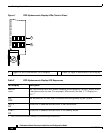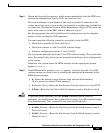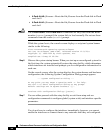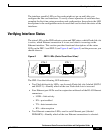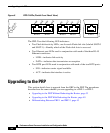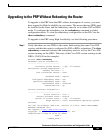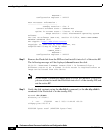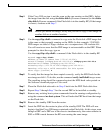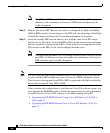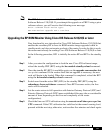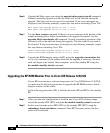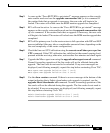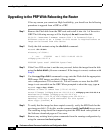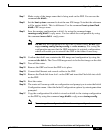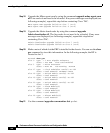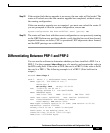
Upgrading to the PRP
36
Performance Route Processor Installation and Configuration Guide
OL-11656-01
Note The PRP and GRP must both be running the same Cisco IOS version;
otherwise, the redundancy will revert to RPR mode and there may be
traffic disruption.
Step 12 Remove the active GRP. Because the router is configured for High Availability
(SSO or RPR+ mode), the switchover to the PRP will take advantage of the High
Availability feature and there will be minimum disruption in operation.
Step 13 Insert the standby PRP into the chassis, also with the same Cisco IOS image
loaded onto its Flash disk. Now both PRPs will be up and running the same image
that was originally running on the GRPs. At this point you can upgrade the Cisco
IOS version on the PRPs to the version shipped with the cards.
Note You must have the same Cisco IOS image loaded on the Flash disks of the
two PRPs. If different versions are loaded, the redundancy will revert to
RPR and there may be traffic disruption.
Note If a GRP and PRP are running simultaneously in the router chassis and the PRP
is active and the GRP standby, the router will revert to RPR redundancy mode.
This is because the upgrade from GRP to PRP is supported with High Availability,
but not the downgrade from PRP to GRP.
After you enter the configuration to load the new Cisco IOS software image, you
must upgrade the RP ROM monitor. Follow the appropriate procedure, depending
on which version of Cisco IOS software is currently running on the RP.
• Upgrading the RP ROM Monitor Using Cisco IOS Release 12.0(24)S or
Later, page 37
• Upgrading the RP ROM Monitor Prior to Cisco IOS Release 12.0(24)S,
page 38



